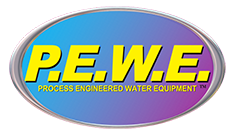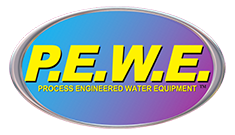 Water is one of the most precious resources on the planet, making the process of treating contaminated wastewater one of the most important today. Out of all of the water on the Earth, just 3% of it is fresh water. In order to provide all of the water needed, wastewater from homes, facilities, and storm runoff all go through many stages to become potable once again. Knowing these three stages of wastewater treatment systems, you will gain a better understanding of the effort that goes into creating healthy drinking water for all.
Water is one of the most precious resources on the planet, making the process of treating contaminated wastewater one of the most important today. Out of all of the water on the Earth, just 3% of it is fresh water. In order to provide all of the water needed, wastewater from homes, facilities, and storm runoff all go through many stages to become potable once again. Knowing these three stages of wastewater treatment systems, you will gain a better understanding of the effort that goes into creating healthy drinking water for all.
Primary Treatment
Before wastewater even gets to primary treatment, it is funneled through collection systems and treated with odor-neutralizing chemicals. Wastewater then goes through screening, in which large items, such as bottle tops and plastics, are removed from the water supply. The water can then move on to primary treatment, in which macrobiotic solid matter is separated from the wastewater. Industrial water treatment systems will pour wastewater into big tanks to allow the solid matter to settle at the tank’s surface. Large scrapers remove this solid waste, known as sludge, and will later pump it out of the tanks for further treatment.
Secondary Treatment
In secondary treatment, the goal is to break down wastewater even further. Starting with an aerobic treatment system, water equipment pumps air into large aeration tanks. These tanks mix wastewater with a small amount of sludge, known as seed sludge, to promote the growth of bacteria and other microorganisms that will consume the remaining organic matter. This entire process produces large particles that settle at the bottom of the aeration tanks. Wastewater typically passes through this system automation for a period of three to six hours.
Tertiary Treatment
The tertiary stage of treatment is where wastewater’s impurities are actually removed from the supply. During this stage, as much as 99% of the impurities are eliminated, making water that is close to drinking water quality. For this stage, wastewater facilities need special equipment and chemical feed stations powered by system automation to effectively sanitize the water. After the combination of equipment and system automation has successfully sanitized wastewater, it is released into the environment through local waterways.
Having clean drinking water is a luxury that many people take for granted, as these advanced systems are not readily available in all parts of the world. It is important to understand these three stages of wastewater treatment. Knowing the intricacies of such a complicated system is essential for realizing the hurtles humans need to jump in order to have a seemingly basic resource.



